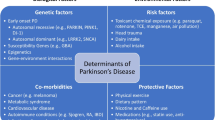Abstract
The purpose of this study is to provide new data on body composition in the Slovak population, particularly impedance vector components according to sex and age, relevant for bioelectrical impedance vector analysis (BIVA) in a clinical sample. The reference sample consisted of 1543 apparently healthy individuals (1007 females and 536 males), aged from 18 to 92 years and of 60 patients with Parkinson’s disease (PD) (26 females and 34 males), aged from 40 to 81 years. Bioelectrical parameters of resistance (R) and reactance (Xc) were measured with a monofrequency analyser (BIA 101). BIVA was used to analyse tissue electric properties in control subjects and patients with PD. The mean vector position differed significantly between PD patients and healthy controls in males of age subgroups 60–69 years and 70–79 years, respectively. These results were conterminous with significant Hotelling’s T2-test; 60–69 y T2=7.8, P=0.024 and 70–79 y T2=7.6, P=0.026. In the RXc-score graph three patients had values outside the 95% ellipse. Altered tissue electric properties were present in 23.5% of males and 15.4% of females. Distribution of impedance vector components in different age categories of healthy Slovak subjects are relevant to comparative population studies and to clinical practice.
Similar content being viewed by others
References
Matiegka J., The testing of physical efficiency, Am. J. Phys. Anthropol., 1921, 4, 223–230
Ross R., Shaw K.D., Rissanen J., Martel Y., de Guise J., Avruch L., Sex differences in lean and adipose tissue distribution by magnetic resonance imaging: anthropometric relationships, Am. J. Clin. Nutr., 1993, 59, 1277–1285
Roland-Cachera M.F., Brambilla P., Manzoni P., Akrout M., Sironi S., Del Maselio A., et al., Body composition assessed on the basis of arm circumference and triceps skinfold thickness: a new index validated in children by magnetic resonance imaging, Am. J. Clin. Nut. R., 1997, 65, 1709–1713
Piccoli A., Rossi B., Pillont L., Bucciante G., A new method for monitoring body fluid variation by bioempedance analysis: The RXc graph, Kidney Int., 1994, 46, 534–539
Piccoli A., Pillon L., Dumler F., Impedance vector distibution by sex, race, body mass index, and age in the United States: standdard reference intervals as bivatiate Z scores, Nutrition, 2002, 18, 153–167
Piccoli A., Pastori G., BIVA software, Department of Medical and Surgical Sciences, University of Padova, Italy, 2002
Barbosa-Silva M.C., Baross A.J., Bioelectrical impedance analysis in clinical practice: a new perspective on its use beyond body composition equations, Curr. Opin. Clin. Nutr. Metab. Care, 2005, 8, 311–317
Piccoli A., Bioelectrical impedance vector distribution in peritoneal dialysis patients with different hydration status, Kidney Int., 2004, 65, 1050–1063
Nescolarde L., Piccoli A., Roman A., Nunez A., Morales R., Tamayo J., et al., Bioelectrical impedance vector analysis in haemodialysis patients: relation between oedema and mortality, Physiol. Meas., 2004, 25, 1271–1280
Walter-Kroker A., Kroker A., Mattiucci-Guehlke M., Glaab T., A practical guide to bioelectrical impedance analysis using the example of chronic obstructive pulmonary disease, Nutr. J., 2011, 10, 35–43
Marini E., Buffa R., Saraga, B., Toffanello E.D., Berton L., Manzato E., et al., The potential of classic and speciffic bioelectrical impedance vector analysis for the assessment of sarcopenia and sarcopenic obesity, Clin. Interv. Aging, 2012, 7, 585–591
Buffa R., Mereu R.M., Putzu P.F., Floris G., Marin E., Bioelectrical impedance vector analysis detects low body cell mass and dehydratation in patients with Alzheimer’s disease, J. Nutr. Health Aging, 2010, 14, 823–827
Norman K., Stobaeus N., Pirlich M., Bosy-Westphal A., Bioelectrical phase angle and impedance vector analysis — Clinical relevance and applicability of impedance parameters, Clin. Nutr., 2012, 31, 854–861
Durrieu G., Llau M.E., Rascol O., Senard J.M., Rascol A., Montastruc J.L., Parkinson’s disease and weight loss: a study with antropometric and nutricional assessment, Clin. Autonomic. Res., 1992, 2, 152–157
Beyer P.L., Palarino M.Y., Michalek D., Busenbark K., Koller W.C., Weight change and body composition in patients with Parkinson’s disease, J. Am. Diet. Assoc., 1995, 95, 979–983
Kushner R.F., Bioelectrical impedance analysis: a review of principles and applications, Am. Coll. Nutr., 1992, 11, 199–209
Talluri T., Quantitative human body composition analysis assessed with bioelectrical impedance, Coll. Antropol., 1998, 22,2, 427–432
Kyle U.G., Bosaeus J., De Lorenzo A.D., Deurenberg P., Elia M., Goméz J.M., et al., Bioelectrical impedance analysis — part I: review of principles and methods, Clin. Nutr., 2004, 23, 1226–1243
Bosy-Westphal A., Danielzik S., Dörhöfer R.P., Piccoli A., Müller M.J., Patterns of bioelectrical impedance vector distribution by body mass index and age: implications for body-composition analysis, Am. J. Clin. Nutr., 2005, 82, 60–68
Marsden C.D., Parkinon’s disease, J. Neurol. Psychiatry, 1994, 57, 672–681
Pfeiffer R.F., Gastrointestinal dysfunction in Parkinson’s disease, Lancet Neurol., 2003, 2, 107–116
Wang G., Wan Y., Cheng Q., Xiao Q., Wang Y., Zhang J., et al., Malnutrition and associated factors in Chinese patients with Parkinson’s disease: Results from a pilot investigation, J. Parkinsonism Relat. Disord., 2010, 16, 119–123
Kyle U.G., Bosaeus J., De Lorenzo A.D., Deurenberg P., Elia M., Goméz J.M., et al., Bioelectrical impedance analysis — part II: utilization in clinical practise, Clin. Nutr., 2004, 23, 1430–1453
Toso S., Piccoli A., Gusella M., Menon D., Bononi A., Crepaldi G., et al., Altered tissue electric properties in lung cancer patients as detected by Bioelectric Impedance Vector Analysis, Nutrition, 2000, 16, 120–124
Author information
Authors and Affiliations
Corresponding author
About this article
Cite this article
Siváková, D., Vondrová, D., Valkovič, P. et al. Bioelectrical Impedance Vector Analysis (BIVA) in Slovak population: application in a clinical sample. cent.eur.j.biol. 8, 1094–1101 (2013). https://doi.org/10.2478/s11535-013-0216-7
Received:
Accepted:
Published:
Issue Date:
DOI: https://doi.org/10.2478/s11535-013-0216-7




